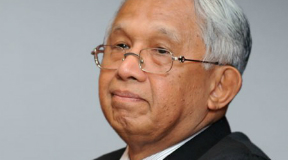 Indonesia and Australia are two close neighbors. As close neighbors, the relationship between the two is very dynamic. An example is the East Timor Referendum which is now a sovereign state called Timor Leste. For several years, Indonesia-Australia relations were somewhat strained because of the deployment of the Kangaroo Country troops. On the Australian side, many are still angry about the killing of five Australian journalists in Balibo, East Timor in 1975.
Indonesia and Australia are two close neighbors. As close neighbors, the relationship between the two is very dynamic. An example is the East Timor Referendum which is now a sovereign state called Timor Leste. For several years, Indonesia-Australia relations were somewhat strained because of the deployment of the Kangaroo Country troops. On the Australian side, many are still angry about the killing of five Australian journalists in Balibo, East Timor in 1975.
During the last ten years, the bilateral relations between Indonesia and Australia have improved. At a bilateral summit in 2012 in Darwin, Australia, President Susilo Bambang Yudhoyono and Prime Minister Julia Gillard from the Labor Party announced plans to improve economic relations between the two countries through a bilateral cooperation agreement. This agreement is called the Indonesia-Australia Comprehensive Economic Partnership Agreement (IA-CEPA). The scope of the partnership agreement is broader than the usual Free Trade Agreement (FTA).
For several years, the negotiation process to realize the IA-CEPA did not progress until there were changes of government in the two countries.
In 2016, the new heads of government of the two countries reaffirmed their determination to continue negotiations to realize the IA-CEPA. Indonesia was represented by President Joko Widodo, while the Australian side by Prime Minister Malcolm Turnbull, who heads the government with a coalition of Liberal and National Parties. Uniquely, the Liberal Party in Australia has a conservative political orientation.
Photos of Malcolm Turnbull, the Prime Minister of Australia who is a millionaire from the city of Sydney, during his first visit to Indonesia with President Jokowi doing “blusukan” at Tanah Abang Market adorn the front pages of newspapers in both countries. The public has viewed it as a personal closeness between the two and mark a new era of cooperation between Indonesia and Australia. Not long after, photos of the President of Indonesia and the Australian Prime Minister reappearing together on a weekend on the beach in Sydney City which further reinforce the impression of friendship.
The IA-CEPA negotiations are characterized by the formation of the Indonesia-Australia Business Partnership Group (IA-BPG) which consists of three organizations each on both sides representing the interests of the business world in these negotiations. The Indonesian side was represented by KADIN Indonesia, APINDO, and the Indonesia-Australia Business Council (IABC). Meanwhile, Australia is represented by equivalent organizations, namely the Australian Chamber of Commerce & Industry (ACCI), the Australia Industry Group (Ai Group), and the Australia-Indonesia Business Council (AIBC).
Economic Theory
The six organizations agreed to submit joint documents as input from the business community to the two governments. It was agreed that KADIN Australia (ACCI) would conduct stakeholder engagement in Australia. Meanwhile in Indonesia, Kiroyan Partners engaged with stakeholders from sectoral business associations through focus group discussions (FGDs) and direct interviews. IA-BPG also entrusted Kiroyan Partners to combine the entire results of stakeholder engagement into one complete document. Therefore, Kiroyan Partners actively participated in the IA-BPG negotiations.
 The end result of this whole process was a 130-page document entitled “Two Neighbors, Partnership in Prosperity”.
The end result of this whole process was a 130-page document entitled “Two Neighbors, Partnership in Prosperity”.
Of course before that, in several IA-BPG meetings, Kiroyan Partners stated the benefits of an economic theory foundation in supporting the world view of business. Finally, our recommendations were accepted by the six business organizations of both countries and became an integral part of the final document. Thus economic theory also plays a role in the analysis and recommendations for bilateral economic cooperation between the two countries.
This challenging job and intensive involvement in the effort to realize international economic cooperation shows how diverse the work in public affairs is.
Noke Kiroyan
Chairman & Chief Consultant, Kiroyan Partners
This article has been published in PR Indonesia magazine 41st Edition, issued on August 2018, page 59.
Download the clipping here.


